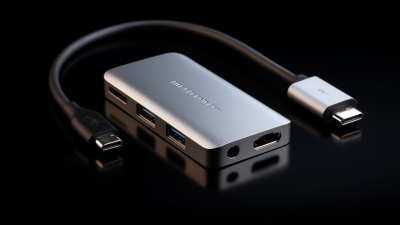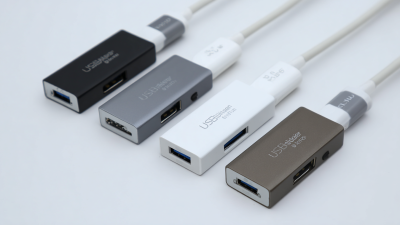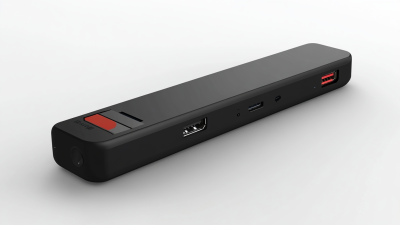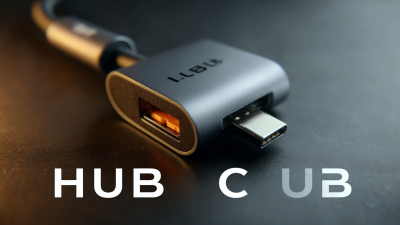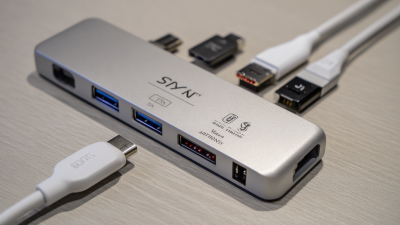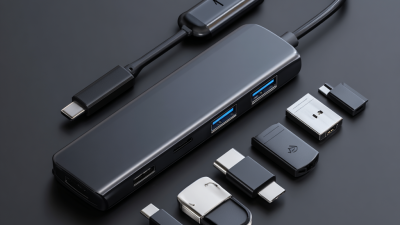
-
Home
-
Products
-
About Us
-
OEM&ODM
-
News
-
Contact Us
Inquiry
Form loading...

In the ever-evolving landscape of technology, the need for enhanced connectivity solutions is more pressing than ever. While the Usb Hub Ethernet Adapter has long been a go-to for bridging the gap between USB ports and Ethernet networks, it often presents limitations in terms of speed, flexibility, and available ports. As users increasingly demand streamlined, efficient methods to connect multiple devices, it becomes essential to explore creative alternatives that can elevate our connectivity experience. This ultimate guide will delve into innovative options beyond the traditional Usb Hub Ethernet Adapter, offering insights into how to achieve seamless connections tailored to the needs of today’s tech-savvy users. Whether you're a professional setting up a home office or a gamer seeking faster data transfer rates, this guide will equip you with the knowledge to enhance your connectivity with style and efficiency.

In today’s digital world, finding innovative methods to boost Ethernet connectivity is essential, especially as more devices demand reliable internet access. While USB hub Ethernet adapters are commonly used, there are several creative alternatives that can enhance connectivity without relying on traditional adapters. One effective strategy is using powerline networking. This technique allows users to transmit internet signals through existing electrical wiring, enabling devices in different rooms or areas to connect to the network seamlessly. With minimal setup, powerline adapters provide a stable Ethernet connection, making them a perfect solution for hard-to-reach locations.
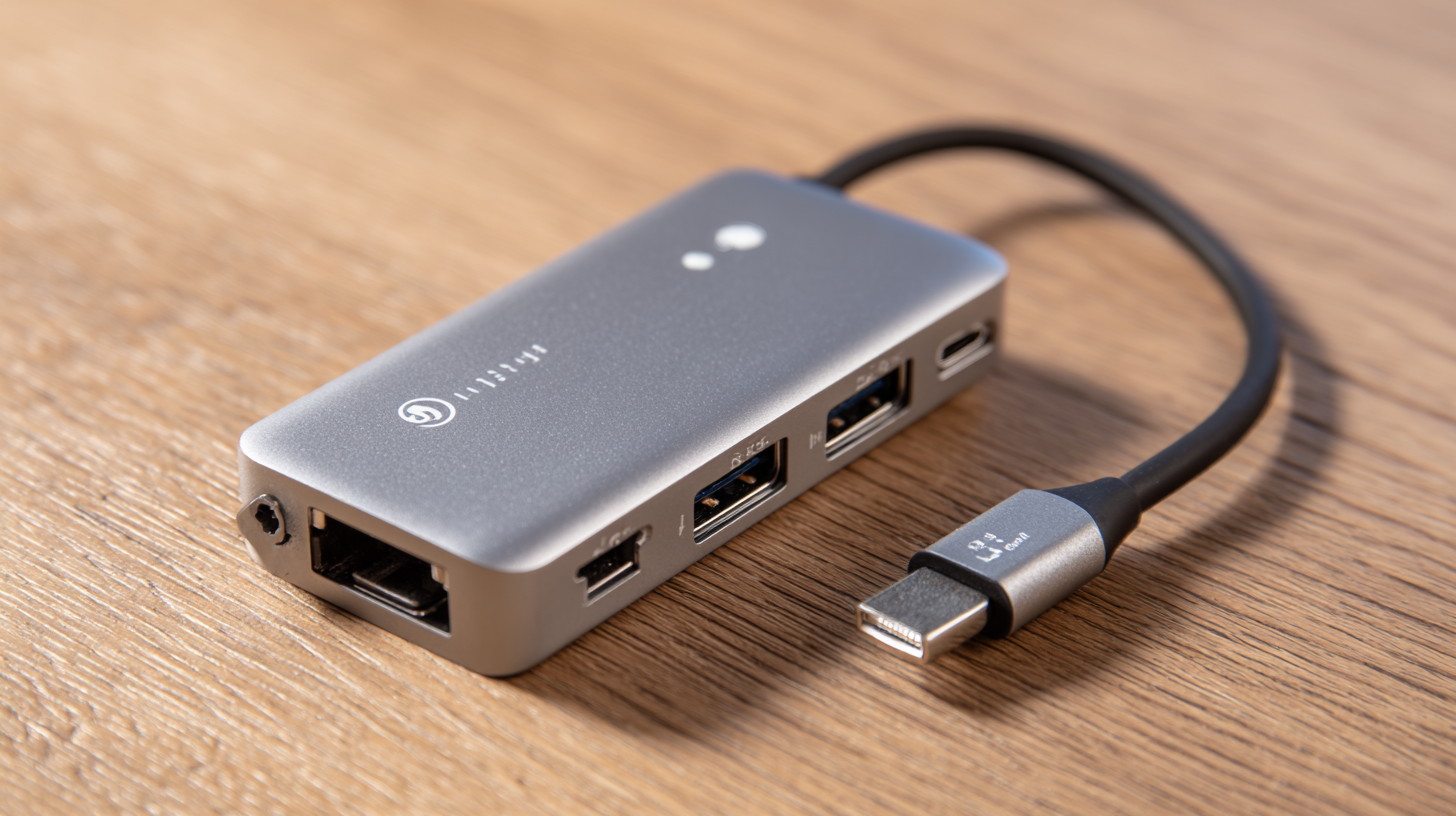
Another intriguing option is leveraging Wi-Fi extenders or mesh networks to create a more robust internet experience. These devices can significantly improve signal strength in various spaces, allowing Ethernet-enabled devices to connect wirelessly. By strategically placing extenders, users can ensure that even the most remote areas of their homes or offices receive a strong internet connection. This method not only eliminates the need for unwieldy cables but also enhances the overall performance of the network, catering to multiple devices simultaneously without sacrificing speed or reliability.
In today's fast-paced digital world, staying connected is essential, especially when working remotely or streaming high-definition content. While USB hub Ethernet adapters have been a staple for enhancing internet connectivity, Wi-Fi extenders are emerging as a practical alternative that offers flexibility and improved access. By extending the range of your existing Wi-Fi network, these devices eliminate the need for multiple cables and create a seamless online experience throughout your home or office.
Wi-Fi extenders function by amplifying your router's signal, allowing devices that are farther from the source to access the internet with better speeds and reliability. This is particularly beneficial in large spaces or areas with obstructed signals. Moreover, they can connect multiple devices wirelessly, leading to a clutter-free setup compared to traditional wired connections. Whether you are gaming, video conferencing, or simply browsing, Wi-Fi extenders provide a robust solution that keeps you connected without the limitations of physical adapters. Embracing this technology not only simplifies your connectivity but also adapitates to the evolving dynamics of smart homes and workplaces.
| Alternative Solution | Benefits | Limitations | Ideal Use Case |
|---|---|---|---|
| Wi-Fi Extender | Enhances Wi-Fi coverage; easy setup | May reduce speeds; dependent on existing network | Large homes or areas with weak Wi-Fi |
| Powerline Adapter | Utilizes electrical wiring; reliable internet | Performance may vary with wiring quality | Connecting distant rooms |
| Mesh Wi-Fi System | Seamless coverage; multiple access points | Higher initial investment | Complex home setups |
| Wireless USB Hub | Multiple device connectivity; no cables needed | Potential for interference; limited range | Connecting devices in a flexible workspace |
If you're looking to boost your connectivity without relying solely on
USB hub Ethernet adapters, consider leveraging
powerline adapters.
These innovative devices utilize your home’s existing electrical wiring to
transmit data between your router and various devices, effectively transforming
any outlet into a network access point. This can be particularly useful in
larger homes or spaces where Wi-Fi signals struggle to reach certain areas.
Tip: When setting up powerline adapters, ensure they're connected to
the same electrical circuit to maximize performance. For the best results, avoid
using powerline adapters with surge protectors or power strips, as these can
disrupt signal strength.
Another advantage of powerline adapters is their flexibility in
device placement. Unlike traditional networking solutions that may require long
cable runs, powerline adapters can give you the freedom to position your devices
wherever they're needed—whether that’s in a home office, gaming room, or even your
living room entertainment center.
Tip: Opt for powerline adapters with built-in Wi-Fi capabilities
if you want to extend wireless coverage in hard-to-reach areas. This dual
functionality allows you to connect multiple devices seamlessly while enhancing
your overall network performance.
When it comes to enhancing connectivity for multiple devices, USB-C docking stations emerge as a versatile alternative to traditional USB hub Ethernet adapters. These docking stations not only provide a reliable Ethernet connection, but also offer a plethora of ports that facilitate seamless integration of various peripherals such as monitors, keyboards, and external drives. This makes them an ideal choice for anyone looking to expand their workstation capabilities without sacrificing performance.
Moreover, USB-C docking stations provide the added benefit of power delivery, allowing users to charge their laptops while simultaneously connecting to multiple devices. This feature is especially advantageous for professionals on the go, as it minimizes the need for multiple chargers and reduces cable clutter. With fast transfer speeds and compatibility with a range of devices, these docking stations are transforming the way we approach connectivity, offering a more streamlined and efficient setup that meets the demands of modern multitasking.
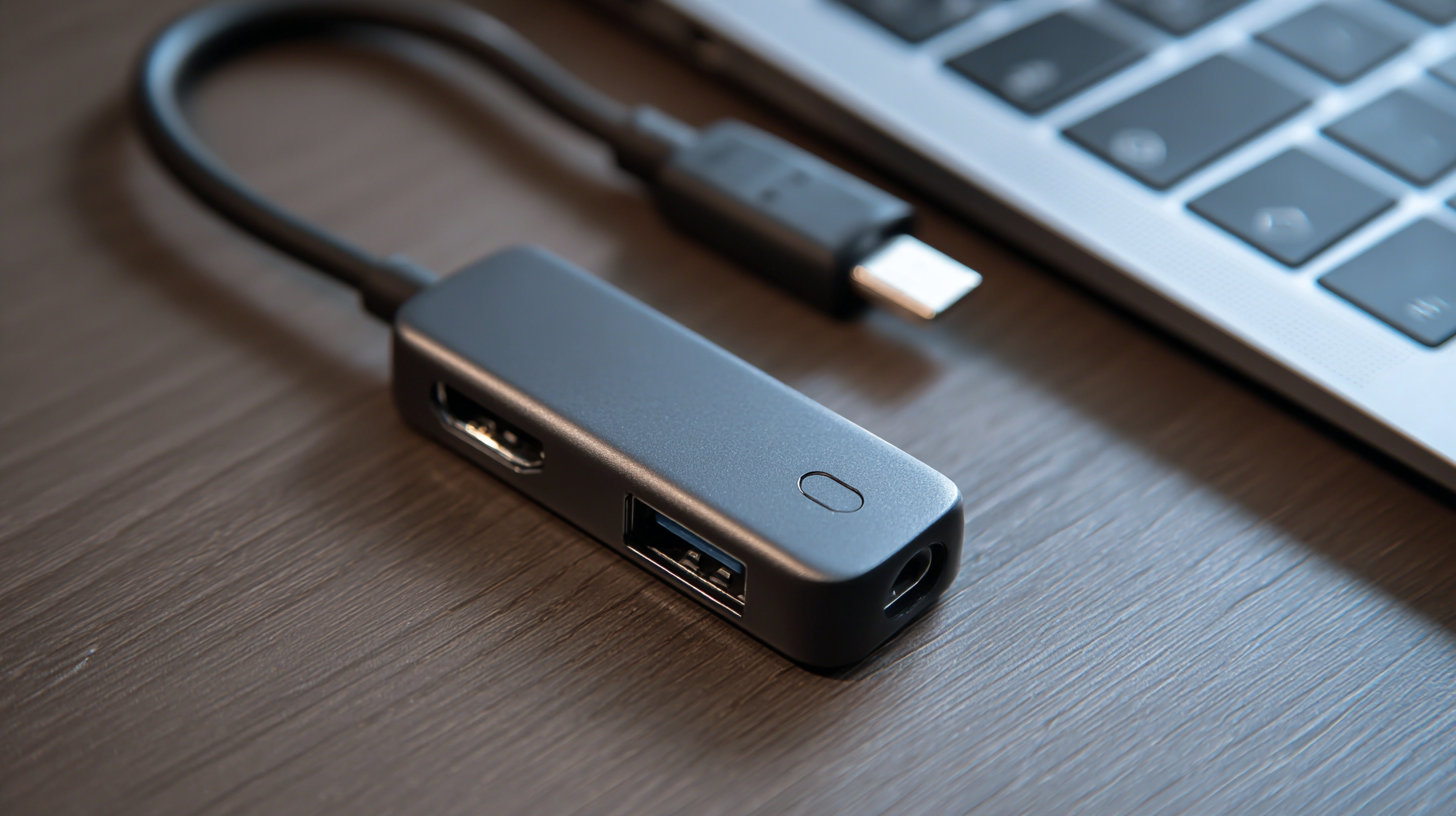
When exploring wireless Ethernet solutions as alternatives to traditional USB hub Ethernet adapters, it's essential to consider their effectiveness in various contexts. Wireless solutions such as Wi-Fi bridges and powerline adapters have emerged as popular options, providing versatile connectivity without the clutter of cables. Wi-Fi bridges, for instance, can extend an existing network's range and enable devices that lack built-in wireless capabilities to connect seamlessly. This method is particularly useful in environments where running physical cables is impractical.
On the other hand, powerline adapters utilize existing electrical wiring to deliver internet connectivity. This can be particularly advantageous in buildings with thick walls or multiple floors where Wi-Fi signals may struggle to reach certain areas. The effectiveness of these solutions, however, can vary based on the quality of the electrical wiring and the distance between adapters. Comparative analyses reveal that while wireless solutions offer flexibility and convenience, the stability and speed can sometimes lag behind wired connections, making it crucial for users to assess their unique needs and environments when choosing the best option for enhanced connectivity.
